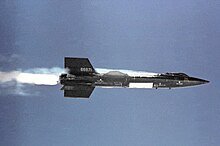Neil Armstrong Pilots the X-15: A Milestone in Space Exploration
On April 5, 1962, Neil Armstrong, the renowned NASA astronaut who would later become the first man to walk on the moon, achieved a remarkable feat in the world of aviation. On this historic day, Armstrong piloted the X-15 rocket plane to an astounding altitude of 54,600 meters, equivalent to approximately 179,000 feet. This momentous achievement marked a significant milestone in the exploration of space and pushed the boundaries of human flight.
The X-15 program, conducted jointly by NASA and the United States Air Force, aimed to gather critical data on high-speed and high-altitude flight. The X-15 rocket plane was a cutting-edge experimental aircraft designed to reach hypersonic speeds and explore the edges of Earth’s atmosphere. Armstrong’s flight on April 5th was part of a series of missions that sought to test the limits of manned spaceflight and pave the way for future space exploration endeavors.
The Significance of Armstrong’s Mission
Armstrong’s successful mission in the X-15 had far-reaching implications for the field of space exploration. By piloting the rocket plane to such an unprecedented altitude, Armstrong demonstrated the feasibility of manned spaceflight and provided valuable insights into the challenges and possibilities of venturing beyond Earth’s atmosphere.
The data collected during Armstrong’s flight contributed to the development of future spacecraft, including those used in the Apollo moon missions. The X-15 program played a crucial role in advancing our understanding of aerodynamics, heat resistance, and other key factors that would ultimately enable humans to journey to the moon.
Armstrong’s experience as an X-15 pilot also shaped his approach to space exploration and influenced his later achievements as an astronaut. His time in the X-15 program provided him with invaluable hands-on experience and a deep understanding of the complexities of spaceflight, which proved instrumental during the Apollo 11 mission when he became the first person to set foot on the lunar surface.
The Legacy of the X-15 Program
The X-15 program, of which Armstrong’s flight was a part, left an indelible mark on the history of space exploration. The program, which ran from 1959 to 1968, conducted a total of 199 flights, with various pilots pushing the boundaries of speed and altitude. The X-15 aircraft reached speeds of up to Mach 6.7 (approximately 4,520 miles per hour) and altitudes exceeding 100 kilometers (62 miles).
These groundbreaking achievements not only expanded our knowledge of flight dynamics but also paved the way for subsequent space missions. The X-15 program directly influenced the development of the Space Shuttle and other spacecraft, shaping the future of human space exploration.
Today, the X-15 is recognized as an iconic symbol of the early days of space exploration. Several X-15 aircraft are on display at museums across the United States, including the National Air and Space Museum in Washington, D.C. These exhibits serve as a testament to the bravery and ingenuity of the pilots who were at the forefront of pushing the boundaries of human flight.
Conclusion
Neil Armstrong’s historic flight in the X-15 rocket plane on April 5, 1962, marked a significant milestone in the history of space exploration. His achievement not only demonstrated the possibilities of manned spaceflight but also contributed valuable data to the development of future spacecraft. The X-15 program, of which Armstrong was a part, played a pivotal role in advancing our understanding of flight dynamics and paved the way for subsequent missions, including the Apollo moon landings. Armstrong’s experience as an X-15 pilot undoubtedly influenced his later accomplishments as an astronaut, culminating in his historic moonwalk. The legacy of the X-15 program continues to inspire and remind us of the remarkable achievements made in the quest to explore the unknown.

